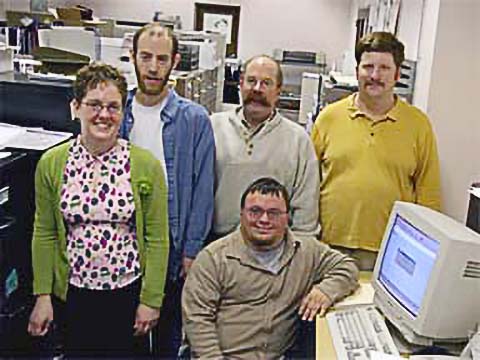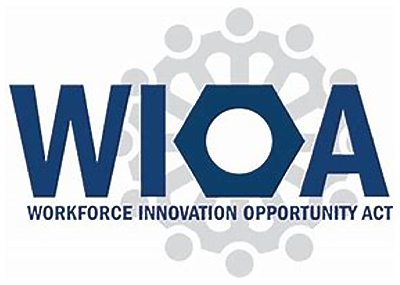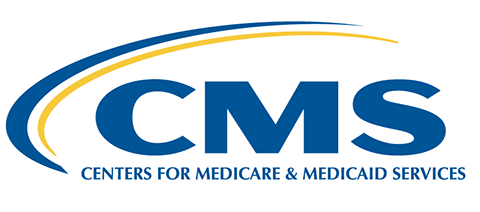The New Century: A New Definition of Success
The Olmstead decision of 1999 and the 1999 Amendments to the Rehabilitation Act combined to support the transformation of the employment system. The elimination of extended (sheltered) employment as a successful rehabilitation outcome is quite in step with the rulings under the Olmstead decision.
The Olmstead decision has forced a much more systematic analysis of federal and state policies and actions in support of community options.
On December 21, 2001, United States Department of Health and Human Services (HHS) Secretary Tommy Thompson submitted to President Bush the first report of agency efforts to meet Executive Order 13217, entitled Delivering on the Promise: Preliminary Report of Federal Agencies' Actions to Eliminate Barriers and Promote Community Integration. This report describes the actions federal agencies propose to take in key areas, including employment.
The DHHS report, as was the case with the President's Panel in 1954, underscored the economic and personal benefits of employment.

Photo courtesy Sherie Wallace
If people with disabilities are to fully access and be a part of their communities, they must have the opportunity to work. Work is so essential that without it people with disabilities often face isolation and segregation from the very communities in which they wish to participate. The dignity, responsibility and economic independence resulting from gainful employment is the most effective way of reducing dependency on public benefits, enhancing self-reliance, changing attitudes and promoting community acceptance of people with disabilities.
The multiple barriers to employment of adults with disabilities include:
- Fragmentation of existing employment services
- Isolation and segregation from mainstream programs and services
- Lack of access to health insurance
- Complexity of existing work incentives
- Lack of control and choice in selection of providers
- Attitudinal barriers based on historical and erroneous stereotypes.

Photo courtesy Sherie Wallace
The following actions were outlined by the United States Department of Health and Human Services:
The Department of Labor (DOL) Office of Disability Employment Policy (ODEP) will:
- Initiate an Olmstead Community Employment Initiative, a strategy to ensure that all DOL policies and activities fully address the employment and training needs of people with disabilities who are at risk of institutionalization, or who are transitioning from institutions into the workplace and the community.
- Award Olmstead Community Employment Planning and Implementation Grants to states that develop an employment focus for people with disabilities in their Olmstead state implementation plans
- Develop training and technical assistance on increasing earnings and customized employment for individuals with significant disabilities earning commensurate wages under section 14(c) of the Fair Labor Standards Act.
- Work with other agencies on activities that promote the transition of young people with disabilities from school to post-secondary opportunities and/or employment.
- Expand self-employment and other entrepreneurial opportunities for people with disabilities.
- Work with other agencies to increase One-Stop Career Center employment services for people with psychiatric disabilities.
- Propose options for increasing the availability of personal assistants for people with disabilities and provide some path of career progression for personal assistants and other direct care staff.
- In collaboration with DOL's Women's Bureau, provide outreach to women with disabilities who are interested in self-employment.

Photo courtesy Sherie Wallace

Photo courtesy Sherie Wallace

Photo courtesy Sherie Wallace

Photo courtesy Sherie Wallace

Photo courtesy Sherie Wallace
A Ric Crowley Anecdote About Early Supported Employment
It All Began With…
…a simple conversation in the early 1970s based on the notion of "what if?" Then the discussion began in earnest between Tom Bellamy (Specialized Training Program (STP) University of Oregon), Dan Close, Ph.D. (Research and Training Center, University of Oregon) and Ric Crowley M.Ed. (Division of MR/DD, Salem, Oregon). What if twelve volunteers (patients) with "significant disabilities":
- left the confines of Eastern Oregon Hospital and Training Center in Pendleton, Oregon and
- moved to two homes in Eugene, Oregon and
- worked at the Specialized Training Program (STP) earning at least minimum wage and
- the criteria to participate was mmmmmm? (in jest "they need to know how to hold a spoon").
Would "they" become part of their communities and be contributing wage earners engaged in productive (albeit extremely complicated) tasks. "They did." And so the Tom Bellamy/Mark Gold "one-upsmanship" competition began. Thanks to the efforts of Tom Bellamy and his staff, and Dan Close and his staff, the outcomes confirmed the unpopular belief that anyone, given appropriate supports, could live and work and thrive in typical communities.
The state, university and federal government collaborated with funding and staff to ensure this initiative received the necessary support. The "STP participants" would not have to be abandoned in state run or private ICF's simply because of a preconceived notion of "incompetence" based on typical medical model assessments that focused on disability rather than ability.
This effort was one of the earliest documented approaches to community inclusion combining some traditional (applied behavior analysis) and visionary (inclusion, freedom, self-direction, choice) approaches. Simply stated, it worked! It worked in spite of the medical model and segregated "programs."
Ric Crowley is a long time professional in the field who has helped pioneer changes in employment, living, and self determination. He currently lives in Louisiana.
The Department of Education's Office of Special Education and Rehabilitation (OSERS) will:
- Actively enforce the new Vocational Rehabilitation regulation that eliminates extended employment, formerly known as sheltered employment, as a final employment outcome under the state vocational rehabilitation services program. An employment outcome may be counted only if an individual with a disability is working in an integrated setting in the community.
The Social Security Administration will:
- Work in each state to provide benefit planning and assistance to beneficiaries to assist them in their efforts to work.
- Expand the number of Employment Support Representatives (ESRs). The ESRs are trained to facilitate the efforts of people who receive SSDI and SSI benefits and want to work, and can inform beneficiaries about the potential effect of work on their Social Security benefits.
Many of these actions are identical to strategies employed in the past – interagency collaboration, emphasis on transition services, assistance to states to develop plans, and so on. These actions create the context for change. Their impact is yet to be determined.
In spite of well-intended legislation (e.g., Individuals with Disabilities Education Act (IDEA), the Americans with Disabilities Act (ADA), Rehabilitation Act (RA), the Workforce Investment Act (WIA), and their predecessors) to address this situation, the statistics have changed little over the past 25 years.
Just as troubling, these facts persist in spite of the existence of educational and career development interventions known to make a positive difference in the lives of youth with disabilities.
Work-based learning experiences, preferably connected to curriculum content; student-centered individualized education programs that drive instruction; family involvement in and support of education and career development activities; and linkages to individually determined support services have all been proven, by both practice and research, to lead to the education and employment success of youth with disabilities.
This is the case regardless of the nature of the disability or the degree of accommodation and support needed. In other words, we know what is needed and we know how to do it. And yet, post-school employment success and economic independence continue to be exasperatingly elusive for most youth with disabilities.

Photo courtesy Sherie Wallace

Photo courtesy Sherie Wallace

Photo courtesy Sherie Wallace

Photo courtesy Sherie Wallace
Governmental activity from 2008-2016 revitalized existing employment policy and saw new initiatives characterized by collaboration across federal and state agencies. These initiatives promoted and prioritized inclusive lives in the community for individuals with disabilities and clearly defined competitive and integrated employment. Legislation, guidance, recommendations, and regulations were due to the leadership of the Obama Administration, the National Governor's Association, the Business Leadership Network, and state governments, with a strong focus on inclusion in work and community for people with disabilities.
Employment First
In 2004, the State of Washington's Division of Developmental Disabilities established a Working Age Adult Policy stating that, "each individual will be supported to pursue his or her own unique path to work, a career, or his or her contribution to/participation in community life. All individuals, regardless of the challenge of their disability, will be afforded an opportunity to pursue competitive employment… Supports to pursue and maintain gainful employment in integrated settings in the community shall be the primary service option for working age adults." (County Services for Working Age Adults, Policy 411).
Using Washington as an example, advocates and policy makers began to champion "Employment First" for their communities, with competitive employment being the first option offered and funded by state agencies. By 2018, APSE identified 49 states having some type of employment first action such as legislation, policy statement, Executive Order, or memoranda of agreements.
National Governor's Association
On February 26, 2013, Delaware Governor Jack Markel testified on behalf of the National Governor's Association (NGA) before the US Senate Committee on Health, Education, Labor and Pensions (HELP Committee) about his initiative, "A Better Bottom Line: Employing People with Disabilities."
Governor Markel introduced his initiative when he became Chair of the NGA in July 2012 and began a year long focus on the role of state government and business in employing and advancing opportunities for people with disabilities to be gainfully and competitively employed.
He had seen the difference that employment made in the quality of life for people with disabilities. He was aware of and understood the personal and economic impact – the vast majority of people with disabilities want to work, they want to be productive. Yet about $300 billion is spent annually providing supports to people with disabilities who aren't employed.

Governor Jack Markell
People First policies were beginning to be adopted. At the same time, strategies were also being developed around employment being the first and preferred outcome for people with disabilities.
Governor Markel referred to the Report as a blueprint to Governors and business, stating:
"Advancing employment opportunities for individuals with disabilities is the right thing to do. It's the smart thing for government to do. And it makes good business sense."
Corporate Initiatives
At the corporate side, Walgreens led the way with its disability employment program spearheaded by Randy Lewis, a Senior Vice President and a parent of a young man with autism. Lewis fervently believes that his son and women and men like him are employable and have bright futures if businesses hire them. Walgreens built several distribution centers using universal design principles so employees, whether or not they had a disability, could perform their work in an environment that accommodated and supported a wide range of skill levels.
Walgreens serves as a model for other corporations such as Lowes, CVS, Bank of America, Marriott, and their peers who belong to the National Business Leadership Network. While these companies vary in size, operation, and mission, they are all committed to employing people with disabilities.

Randy Lewis and Austin Lewis
Federal Policy
Section 503 of the Rehabilitation Act
On September 24, 2013, the U.S. Department of Labor's Office of Federal Contract Compliance published a final rule changing the regulations implementing Section 503 of the Rehabilitation Act intending to reduce barriers to equal employment for people with disabilities. These regulations pertained to entities contracting with the federal government. The ruling:
- Established a goal of 7% utilization goal for individuals with disabilities
- Required government contractors to invite applicants to voluntarily disclose their disability prior to receiving an offer of employment or after receiving a job offer. Recognizing that some employees acquire a disability, contractors are required to invite employees to identify their disability on a reoccurring basis.
Systems Change
The Administration on Developmental Disabilities, now known as the Administration for Individuals with Intellectual and Developmental Disabilities, in the Department of Health and Human Services, in 2011, funded 8 state systems change project to increase the number of transition aged youth entering competitive integrated employment and post-secondary education. This program, Partnerships in Employment, resulted in a variety of changes at the state and local level that included state and local policy development, new training and educational programs for educators, service providers, youth and families; and collaboration and coordination between state agencies to minimize duplication of services and the blending of funding sources for competitive employment.
Concurrently, the Office of Disability Employment Policy in the U.S. Department of Labor funded a cross-disability and cross systems change initiative known as the Employment First State Leadership Mentoring Program (EFSLMP). On-site and virtual technical assistance are provided to improve or reform policy, funding and employment services practices.
Department of Justice Consent Decrees
Rhode Island was cited by the Justice Department for violating the Americans with Disabilities Act because the state was segregating individuals with intellectual and developmental disabilities through their participation in sheltered workshops and facility-based day programs. Under the decree, RI agreed to provide supported employment--individual jobs in the general workforce, at minimum wage or higher for at least 20 hours a week. Transition services were to begin at age 14 and include internships, job site visits and mentoring to prepare students for employment. To fulfill the agreement, RI was expected to redirect the funds it expends in segregated services to community-based employment services. The agreement was noteworthy because it was the first in the country to address the rights of people with disabilities to receive state funded services in the community. The agreement between the DOJ and the State occurred in 2014 and gave the state 10 years to transform its system and comply with the consent decree.
Oregon reached an agreement with the Department of Justice in 2015 following the first-class action lawsuit in the country challenging a state-funded and administered employment services system that supporting sheltered workshops thereby violating ADA's integrated mandate. Eight individuals and the United Cerebral Palsy of Oregon and Southwest Washington filed on behalf of themselves and others who were in Oregon sheltered workshops or referred to these workshops. The Department of Justice moved to intervene in the case. As a result, 1,114 people in sheltered workshops were slated to receive jobs in the community at competitive wages, with the state having 7 years to comply with the decree.
Workforce Innovation and Opportunity Act
WIOA, passed in 2014, replaced the Workforce Investment Act and amended the Rehabilitation Act of 1973. Key changes in the Act:
- A larger and more active role for the vocational rehabilitation system from school to competitive employment or post-secondary education
- Efforts to limit the use of sub-minimum wage (Section 511)
- Required collaboration and agreements between VR, Medicaid, and state IDD agencies
- Defined customized employment (the first time this service is noted in statute) and supported employment
- Expanded services for the general workforce system and One-Stop Career Centers in meeting the needs of people with disabilities
- Changed performance measures (David Hoff, ICI, 2014)
- Introduced a new service, pre-employment transition services. to help students learn or build their employment related skills (individual or group settings). These are:
- Counseling regarding learning about jobs particularly jobs that are in demand by businesses (job exploration) and administering vocational interest inventories
- Work based learning experiences (in school, after school, or general workforce) such as internships, apprenticeships, short-term employment and on the job training, work site tours, job shadowing, mentoring, informational interviewing and job training that contribute to learning about jobs, skills and other requirements
- Counseling regarding enrollment in comprehensive transition or post-secondary education at colleges, universities, technical or vocational schools
- Training to improve and develop social and soft skills (i.e., being on time, steady attendance, personal hygiene) and living independently (workplace readiness)
- Instruction in self-advocacy which can include peer mentoring, requesting accommodations, services, and supports; participating in youth leadership activities, and being informed about rights and responsibilities

Medicaid Employment Initiatives
Updates to the 1915 (c) Waiver Instructions and Technical Guide about employment and employment related services
CMS's commitment to employment was evidenced by a guidance issued on September 16, 2011 pertaining to 1915(c) waiver participants. The guidance contained descriptions considered by CMS as competitive employment best practices. CMS listed: peer support, particularly for individuals with mental illness; self-directed services where individuals can hire their own job coaches; customized employment; supported employment; natural supports; and Ticket to Work.
Waiver funding was not to be used to provide vocational services in a facility or sheltered work setting. The guidance also made the distinction between vocational and pre-vocational services. It said that pre-vocational services are to further habilitation goals and designed to create a path to competitive integrated employment.
Those receiving these services must have employment-related goals in their person-centered services and supports plan with a defined period of time for such services. Finally, this guidance provided core service definitions for day habilitation, prevocational services, supported employment (including self-employment), career planning and split supported employment into 2 services: individual and small group.

HCBS Settings Rule
CMS issued this 2014 rule to ensure that individuals receiving HCBS waiver services would have, "full access to the benefits of community living and the opportunity to receive services in the most integrated setting appropriate." The rule applied to all HCBS settings, residential and non-residential. States must comply with the ruling by March 2021 and develop state plans describing compliance. Included in this rule were requirements for person-centered planning, informed choice and independent and conflict free case management. Person-centered plans must include goals related to community participation and employment.
This ruling aligns Medicaid funding with Department of Justice actions and complies with the integrated mandate in ADA.
